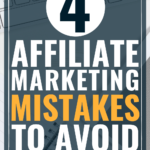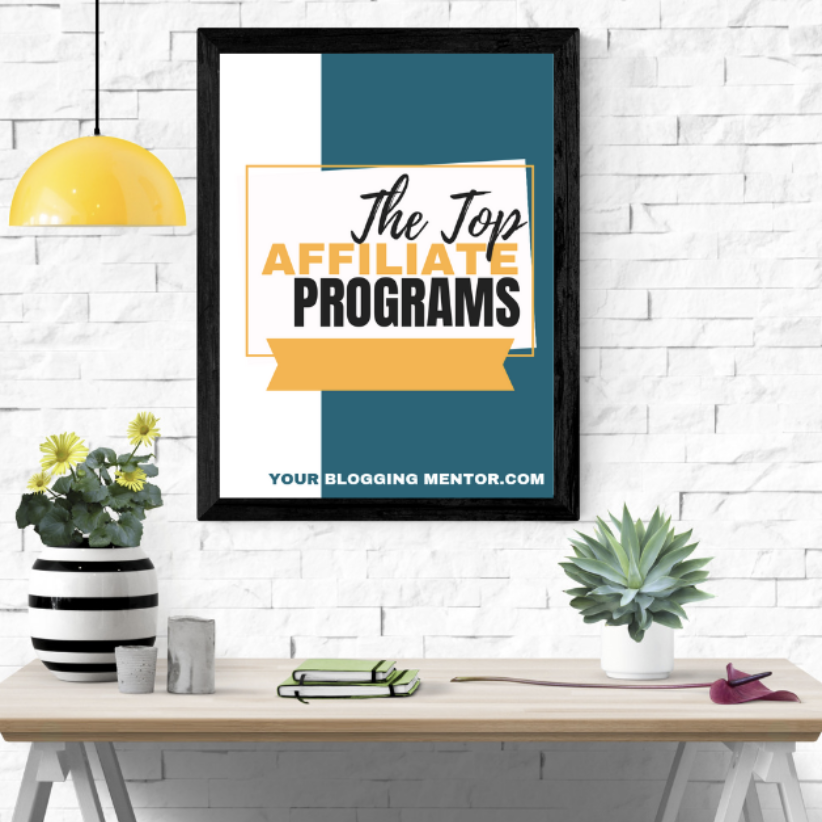Are you brand new to using affiliate links? Take note of these biggest affiliate marketing mistakes to avoid!
If you’re just starting to use affiliate links, it’s really important to know how to use them to your best advantage so that your affiliate marketing strategies can be successful!
What is an affiliate link?
First of all, if you’re brand new to blogging and don’t know what an affiliate link is, it’s simply a link that a reader clicks on and earns you a commission by taking a certain action or making a purchase.
Affiliate marketing is a really great way to make a lot of money as a blogger. You can promote your favorite products, great offers and deals, sales, and more using affiliate links.
Actually, for years, this was our strongest income stream over at MoneySavingMom.com — and it’s one that we still use every single day, despite having many other streams of revenue now!
4 Affiliate Marketing Mistakes to Avoid
As I’m teaching other bloggers how to be successful with affiliate marketing, I see four common mistakes that bloggers routinely make.
And if you make any of these mistakes, your posts are going to fall flat, engagement and click-throughs will be down, and you’ll ultimately not earn any affiliate income because you’re not serving your audience well.
I highly encourage you to watch out for these affiliate marketing mistakes to avoid next time you use affiliate links in a post:
1. Not Using Your Own Photos.
I commonly see bloggers write blog posts about a product or offer using an affiliate link, but they don’t use their own photos.
Using your own photos tells your audience that you have this product, use this product, and love this product.
When you use your own photos, it makes the offer SO much more legitimate and compelling, because it helps you relate to your audience.
Don’t be afraid to try taking your own photos. Even if you don’t feel skilled in photography or editing, I encourage you to take your own photos!
Just use natural lighting, a decent set-up, and your iPhone! Your own amateur photo will connect better with your audience than a polished stock photo every single time.
Pro Tip: Also make sure to link the photos to your affiliate link, because a lot of times people click on photos instead of text!
2. Not Using Text Links.
A lot of people simply use the html for a graphic that an affiliate portal offers, but it’s SO important that you also use text links!
People click on both photos and text links, but the more often you’ve linked the affiliate link throughout your post in creative ways, the bigger the chance people will click on it!
And be sure to use the affiliate link within your own natural language and wording. Don’t use pre-scripted wording. That will fall flat with your audience every single time.
3. Not Talking About Personal Experience.
Readers want to know why you’ve chosen to promote something.
So don’t just describe a product to your readers. Tell them about your personal experience!
It’s much more believable, credible, and interesting if you talk about your personal experience with a product.
Tell your audience how a product brings value to your life and how it has impacted you in a significant way. Explain to them how a product will provide a solution to a problem they have.
For example, don’t just say “This was a good book.” Say, “I read this book and couldn’t believe the information they gave on x, y, and z! It was so helpful!”
Pro tip: Don’t make false claims, though! Just be honest and real, so that you audience can relate to you!
4. Not Giving a Clear Call to Action.
People want to know what they’re supposed to do after they listen to a podcast, read a blog post, or watch a Facebook Live about a product or offer you’re promoting.
It’s important that you make it VERY clear to your readers what they’re supposed to do to take action on an offer.
You should make the call to action clear, straightforward, and urgent. People shouldn’t have to wonder how to take action. You should lay it out step by step for them.
For example, a great call to action is: “For the next three days only, click here and use this coupon code to get this deal!”
And if it’s a really complicated process that involves multiple steps, break it down step-by-step and make it very simple to follow.
An Example of Using Affiliate Links Well
One of our most successful posts in the history of MoneySavingMom.com is this Hair Straightener review I did.
{It’s not available anymore, so I’m not trying to get you to buy it! This is just an example!}
This Hair Straightener post is a great example of how to use affiliate marketing really well in a blog post.
In the post, I tell a story about my experience and use my own photos. I present a problem and then provide a solution. I explain how it changed my hair for the better.
And notice at the end of the post that I made the deal very clear. I broke it down step-by-step how to get the hair straightener and argan oil for just $39 shipped.
This post alone made us thousands and thousands of dollars back in 2016!
Take note of these affiliate marketing mistakes to avoid and I can almost guarantee you’ll see higher conversion rates with your audience!
Need More Affiliate Marketing Help?
Psst! If you’re looking for some ideas on affiliate programs to try out, be sure to sign up for our FREE list of 20+ top affiliate programs perfect for beginner bloggers!



In the Hair Straightener example, I don’t see an affiliate link disclosure. Did I miss it? Aren’t you supposed to put it near the link?
We usually put our affiliate disclosure at the top of each post when there are affiliate links in the post.
Hi Crystal, I would like to start my own blog but I have a problem. I’ve been doing my research on blogging and everywhere I read, it’s a blog about selling something, a recipe, a review of something the blogger had purchased but I’m not a chef or a great cook so that’s out for me. I don’t have the money to spend to purchase things to review on my blog. I don’t have anything to sell. Of all the research I’ve done, it’s about selling myself. Oookay, so I was thinking of doing a short story blog about myself. But how do I do this, especially when I can’t just copy and paste pictures and I can’t draw and I’ve lost all my family pictures and personnel pictures to Hurrican Harvey? Also, I notice that it is advisable to create a Facebook, Instagram, Twitter and etc account. Guess what I’m really asking for is a mentor to help me get started until I understand what I need to do. Thanks for all your help in this.
Welcome! I’d start by going through my free blogging class here: https://courses.yourbloggingmentor.com/3-steps-to-start-that-blog-youve-been-dreaming-of/
Hi Crystal! I just added my first affiliate banner on my side bar! I will definitely be linking through my posts. Here’s a question: Can I shop through my own affiliate link? Or is that somehow cheating or against the rules?! I’m signed up with Amazon and ShareASale.
You definitely don’t want to shop through your own affiliate link. Most affiliate companies can track that and will often kick you out of their program — especially Amazon! Hope that helps. 🙂 And yay for adding your first affiliate banner to your side bar! -Meg, YBM Team
I’m very interested in blogging. I wasn’t really aware of the importance of affiliate marketing though to earn money off a blog. I tried going through Wealthy Affiliate once before, but found myself weighed down by all the steps. I considered getting there premium account, but as I am Canadian it seemed somewhat expensive.
I stumbled upon your courses through a Focus on the Family link and find myself very interested. I think the main thing that holds me back with blogging is wondering how much money needs to be spent before making money off your blog.
Have you taken my free blogging class? https://courses.yourbloggingmentor.com/3-steps-to-start-that-blog-youve-been-dreaming-of/ If not, I’d start there!